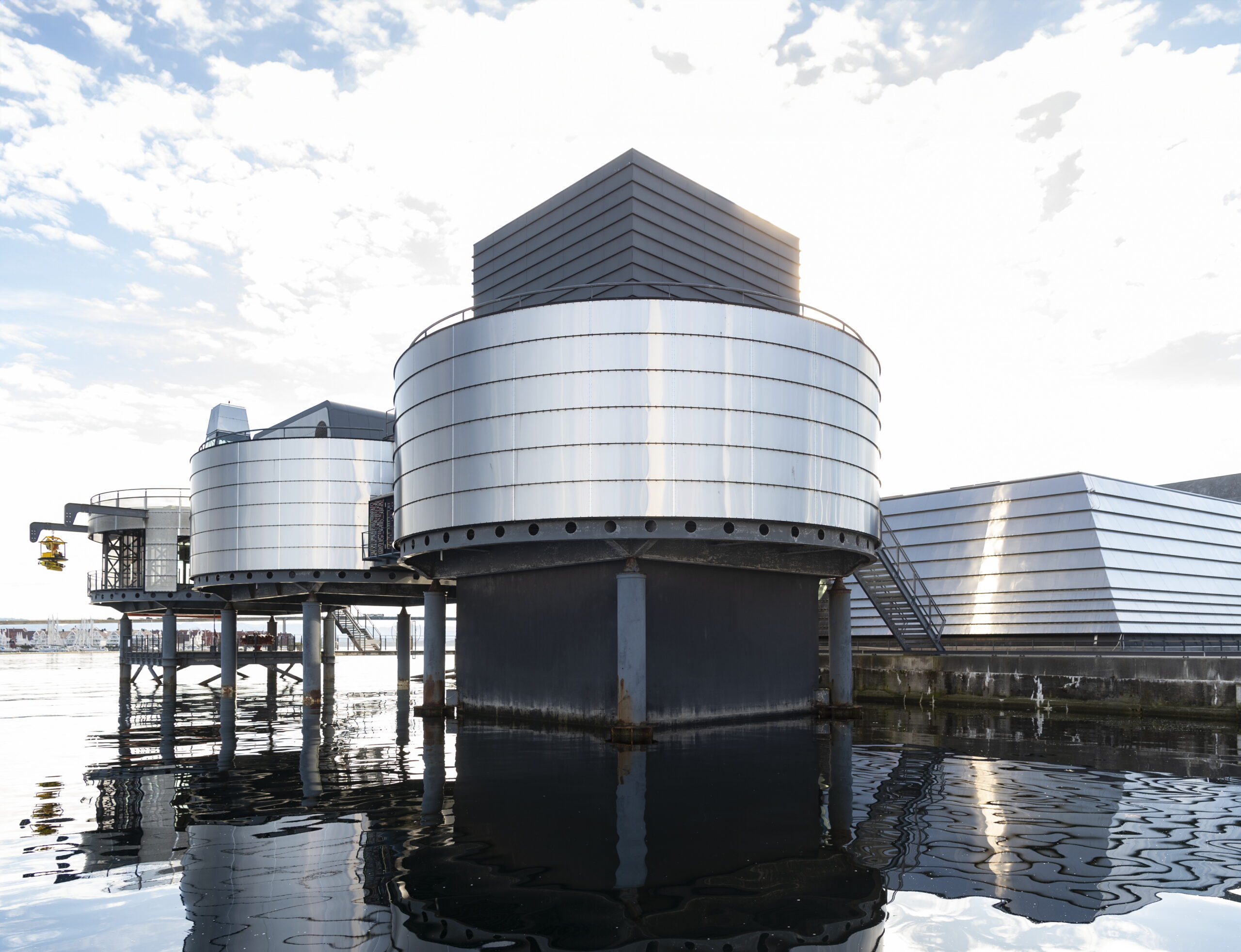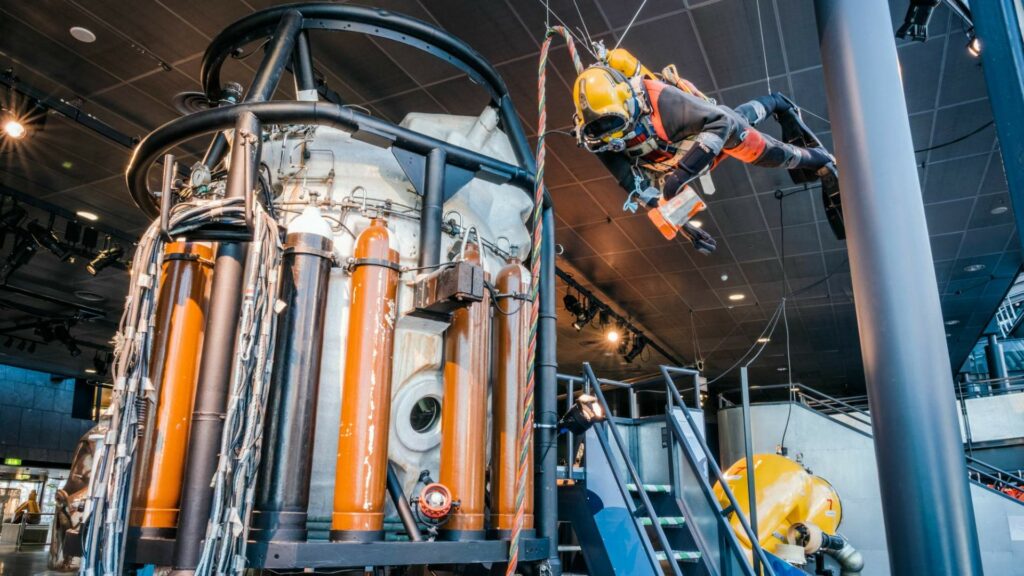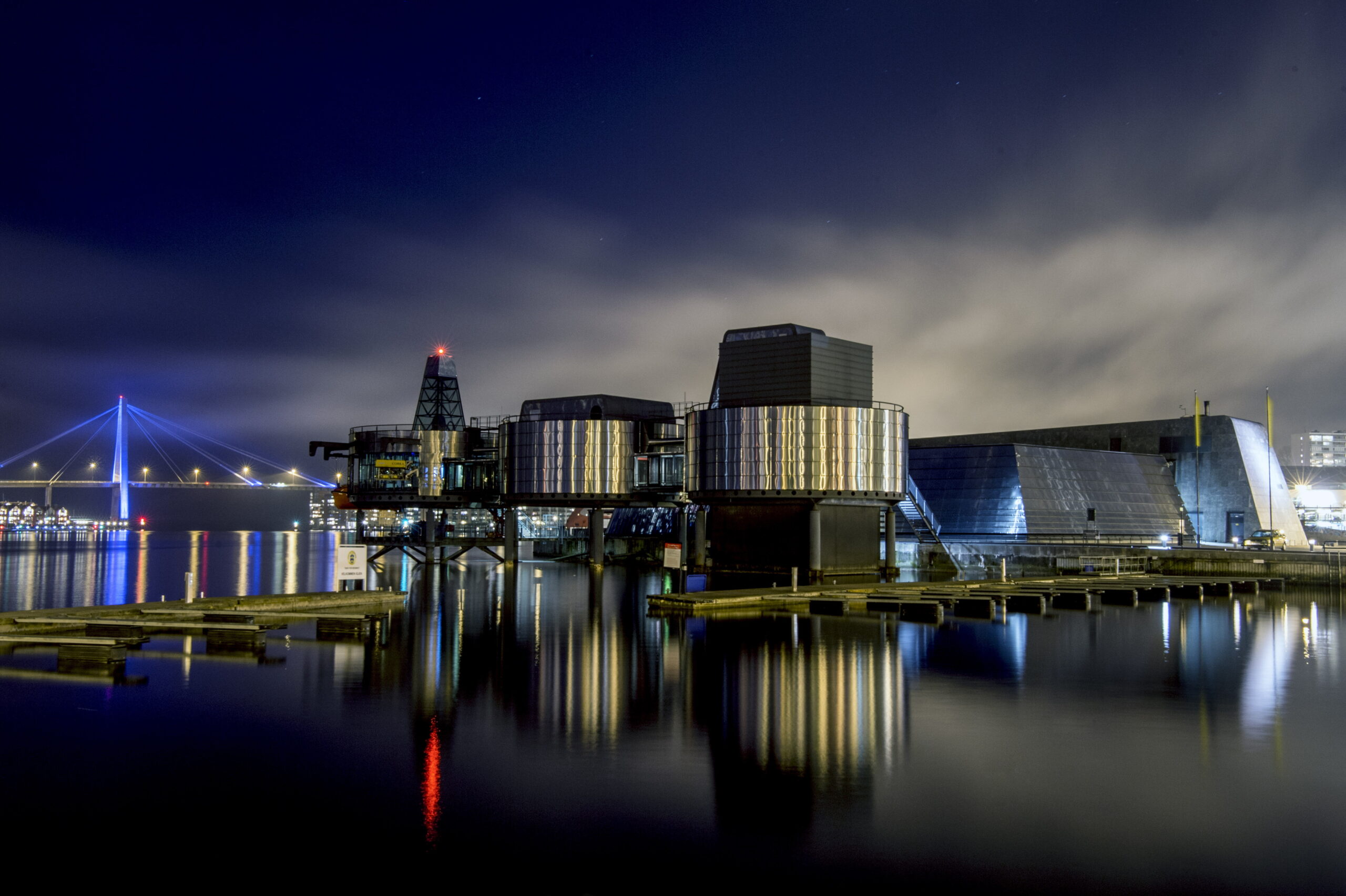Step inside this museum that shows how a nation’s true treasure can be foresight and sustained citizen wellbeing
When one thinks of Norway, they picture fjords, the midnight sun, and Viking sagas. However, there’s another story, more modern and less mythic, that has shaped Norway into one of the world’s wealthiest and happiest nations: the story of oil.
At the heart of that story lies the Norwegian Petroleum Museum (Norsk Oljemuseum) in Stavanger. Stavanger is a charming coastal town, often the gateway to Norway’s most famous fjords.
Far from being a dry, industrial exhibit, this striking, futuristic museum offers a window into how oil transformed a humble fishing nation into a global leader in prosperity, innovation, and sustainability.
For families, curious travellers, and history lovers alike, it’s one of the most thought-provoking stops on a Norwegian journey.

impressing elders and children alike. Photo by Shadé B. Martins/ Norsk Oljemuseum
A museum shaped like an oil rig
Even before you step inside, the Petroleum Museum makes a statement. Its dramatic architecture resembles an offshore oil platform rising from Stavanger’s harbour. Children are immediately fascinated by its scale, while the symbolism strikes adults: this is a place where Norway tells its greatest 20th-century story with pride and candour.
The discovery that changed Norway forever
In the 1960s, Norway was a modest, mostly fishing-based economy. Everything changed in 1969, when Phillips Petroleum struck oil at Ekofisk, a field in the North Sea.
Overnight, Norway had access to what was called ‘black gold’. But unlike many resource-rich countries, Norway chose a path of prudence. The nation invested oil revenues not into excess, but into building infrastructure, education, healthcare, and – most famously – the Norwegian Sovereign Wealth Fund, today the world’s largest, worth over $1.9 trillion.
At the museum, this story is brought alive with films, interactive exhibits, and archival footage. Beyond economics, it’s a story of vision, discipline, and how a small nation planned for its future.
Also read: Why families are flocking to this polar museum
Interactive exhibits that captivate all ages
What makes the museum such a family favourite is its mix of serious history and hands-on fun:
- Children can climb into a helicopter simulator and experience the thrilling ride offshore oil workers take to reach rigs.
- A replica oil rig drilling floor shows the daunting machinery and courage required.
- Interactive screens explain how oil and gas form deep beneath the seabed in a way that is easy to grasp.
- For the environmentally conscious, the museum openly discusses climate change, sustainability, and the shift toward renewables—making it not just about the past, but also about the choices of the future.

they are extracted in a way that is easy to grasp. Photo by Shadé B. Martins/Norsk Oljemuseum
Norway’s oil wealth: a lesson for the world
One of the most fascinating parts of the Petroleum Museum is learning how Norway used its oil wisely. Unlike nations that squandered resource wealth, Norway created the Government Pension Fund Global, often simply called the Oil Fund.
Every krone earned from oil and gas exports is carefully managed and invested worldwide, making it the largest sovereign wealth fund on earth. Its purpose? To ensure that even when oil runs dry, future generations of Norwegians will prosper.
For Indian travellers, especially, coming from a nation where natural resources often spark debates about inequality or politics, this story feels both refreshing and inspiring. It’s proof that governance and foresight can turn natural bounty into shared national wealth.

future. Norway is at the forefront of the green transition. Photo by Rune Egenes
From oil to a green future
The museum is not just about nostalgia. It actively engages with questions of the future:
- How long will oil remain relevant?
- What happens when fossil fuels phase out?
- How can a country that grew rich from petroleum lead in renewable energy and climate responsibility?
Norway today is at the forefront of the green transition. Electric vehicles, wind energy projects, and sustainability commitments. The Petroleum Museum doesn’t shy away from these tensions; instead, it challenges visitors to think critically.
For travellers, it’s a rare opportunity to reflect on the balance between prosperity and planet.
Why it works for family travel
Travel with children often means striking a balance between education and entertainment. The Petroleum Museum manages both effortlessly:
- Kids marvel at the helicopter rides, oil rig models, and interactive displays.
- Parents and teens engage in deeper conversations about energy, sustainability, and the future.
- Together, families walk away with a richer understanding of Norway, not just its mountains and fjords, but its beating economic heart.
A perfect stop on your Norway itinerary
Stavanger, a charming coastal town, is often the gateway to Norway’s most famous fjords, like Lysefjord with its iconic Preikestolen (Pulpit Rock). While many travellers come for the hiking, adding the Petroleum Museum offers cultural depth to a trip dominated by nature.
It’s a chance to see Norway in full: the raw landscapes shaped by time, and the modern prosperity shaped by oil.
Final word: more than a museum, a mirror of Norway
For Panache World clients who seek journeys that combine beauty with meaning, the Petroleum Museum is essential. It’s not just about oil: it’s about vision, responsibility, and the courage to think of future generations.
Norway’s story is one of striking oil, yes. But it’s also about striking the right balance. And that lesson resonates long after you leave Stavanger’s harbour.
When you next journey through Norway, don’t just climb the fjords, step inside this extraordinary museum, and discover the story of the nation’s true treasure: foresight.







